Volume 5 | Number 2 | November 2013
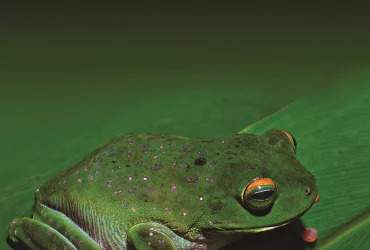 v5i2.109
v5i2.109ISSN: 1800-427X (print)
eISSN: 1800-427X (online)
DOI:10.47605/tapro.v5i2.109
Submitted date: 19 August 2013
Accepted date: 18 November 2013
Published date: 25 December 2013
Pp. 131–137.
MIXED BREEDING SYSTEM AND ENTOMOPHILY IN Malachra capitata L. (MALVACEAE)
P.S. Raju* & A.J. Solomon Raju
*Corresponding author. E-mail: ajsraju@yahoo.com
Abstract
Malachra capitata is a small seasonal herb. Flowering occurs during September–October. It is hermaphroditic and self-compatible with a mixed breeding system. The conspicuous floral displays, non-tubular nature of the flower, and the small volume of nectar with high sugar concentration attract bees and butterflies with bees serving as the principal pollinator. The fruit set is 21% in open-pollination mode despite the hectic foraging activity of bees and butterflies. The observed fruit set rate is attributed to the high percentage of flower predation by beetles, and by the nature of soil nutrient/environment requirements. The fruit is a schizocarp with five 1-seeded indehiscent mericarps. New plants arise from seed during the rainy season mostly at parental sites and usually form pure stands; the plants complete their life cycle within six or seven months.
Key words : mangrove associate, herb, insects, pollinator, soil binder, landward plant, India
Section Editor: James L. Reveal
eISSN: 1800-427X (online)
DOI:10.47605/tapro.v5i2.109
Submitted date: 19 August 2013
Accepted date: 18 November 2013
Published date: 25 December 2013
Pp. 131–137.
MIXED BREEDING SYSTEM AND ENTOMOPHILY IN Malachra capitata L. (MALVACEAE)
P.S. Raju* & A.J. Solomon Raju
*Corresponding author. E-mail: ajsraju@yahoo.com
Abstract
Malachra capitata is a small seasonal herb. Flowering occurs during September–October. It is hermaphroditic and self-compatible with a mixed breeding system. The conspicuous floral displays, non-tubular nature of the flower, and the small volume of nectar with high sugar concentration attract bees and butterflies with bees serving as the principal pollinator. The fruit set is 21% in open-pollination mode despite the hectic foraging activity of bees and butterflies. The observed fruit set rate is attributed to the high percentage of flower predation by beetles, and by the nature of soil nutrient/environment requirements. The fruit is a schizocarp with five 1-seeded indehiscent mericarps. New plants arise from seed during the rainy season mostly at parental sites and usually form pure stands; the plants complete their life cycle within six or seven months.
Key words : mangrove associate, herb, insects, pollinator, soil binder, landward plant, India
Section Editor: James L. Reveal
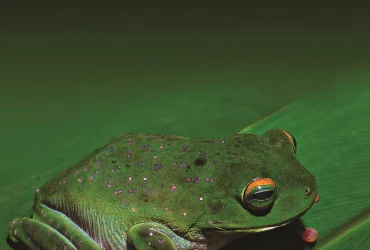 v5i2.108
v5i2.108ISSN: 1800-427X (print)
eISSN: 1800-427X (online)
DOI:10.47605/tapro.v5i2.108
Submitted date: 15 August 2013
Accepted date: 19 November 2013
Published date: 25 December 2013
Pp. 124–130.
PSYCHOPHILOUS AND MELITTOPHILOUS POLLINATION SYNDROME IN Tridax procumbens L. (ASTERACEAE)
P. Varalakshmi & A.J. Solomon Raju*
*Corresponding author. E-mail: ajsraju@yahoo.com
Abstract
Tridax procumbens exhibits explosive flowering during June–September while sporadic flowering at other times. In the capitula, the florets are of two types, nectarless female ray florets and nectariferous bisexual disc florets. The disc florets are sucrose-dominant with sugar concentrations of 20% and the energy yield is optimal. The nectar contains five essential and ten non-essential amino acids. The capitula attract butterflies, bees, flies and thrips. The butterflies, while collecting nectar, and bees, while collecting nectar and pollen, effect pollination. Thrips use flower buds for breeding and effect pollination while feeding on pollen and nectar. The study suggests that T. procumbens exhibits psychophilous and melittophilous pollination syndrome. The work presented in this paper on plant-butterfly interactions assumes importance in the context of planning for and setting up butterfly parks.
Key words : Medicinal herb, insects, forage, pollinator, entomophily, ligulate, tubular, India
Section Editor: James L. Reveal
eISSN: 1800-427X (online)
DOI:10.47605/tapro.v5i2.108
Submitted date: 15 August 2013
Accepted date: 19 November 2013
Published date: 25 December 2013
Pp. 124–130.
PSYCHOPHILOUS AND MELITTOPHILOUS POLLINATION SYNDROME IN Tridax procumbens L. (ASTERACEAE)
P. Varalakshmi & A.J. Solomon Raju*
*Corresponding author. E-mail: ajsraju@yahoo.com
Abstract
Tridax procumbens exhibits explosive flowering during June–September while sporadic flowering at other times. In the capitula, the florets are of two types, nectarless female ray florets and nectariferous bisexual disc florets. The disc florets are sucrose-dominant with sugar concentrations of 20% and the energy yield is optimal. The nectar contains five essential and ten non-essential amino acids. The capitula attract butterflies, bees, flies and thrips. The butterflies, while collecting nectar, and bees, while collecting nectar and pollen, effect pollination. Thrips use flower buds for breeding and effect pollination while feeding on pollen and nectar. The study suggests that T. procumbens exhibits psychophilous and melittophilous pollination syndrome. The work presented in this paper on plant-butterfly interactions assumes importance in the context of planning for and setting up butterfly parks.
Key words : Medicinal herb, insects, forage, pollinator, entomophily, ligulate, tubular, India
Section Editor: James L. Reveal
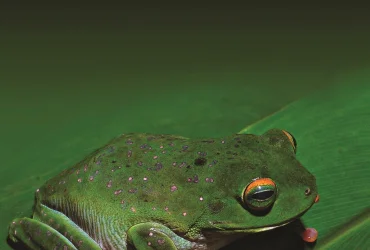 v5i2.107
v5i2.107ISSN: 1800-427X (print)
eISSN: 1800-427X (online)
DOI:10.47605/tapro.v5i2.107
Submitted date: 4 November 2013
Accepted date: 25 November 2013
Published date: 25 December 2013
Pp. 120–123.
A NEW ORCHID OF THE GENUS Bulbophyllum (ORCHIDACEAE) FROM WESTERN GHATS OF SOUTHERN INDIA
S. Karuppusamy* & V. Ravichandran
*Corresponding author. E-mail: ksamytaxonomy@gmail.com
Abstract
Bulbophyllum aureoflavum, a new orchid from Western Ghats of southern India, is described and illustrated. The new species, Bulbophyllum aureoflavum, is rare and known presently only from the type locality in southern Western Ghats. This species is related to B. elegantulum and B. fischeri, but differs by having a thick rhizome, subglobose pseudopbulb, bendant filiform scape, and a light golden yellowish, glabrous flower.
Key words : Bulbophyllum aureoflavum, new species, pantropical, taxonomy
Section Editor: James L. Reveal
eISSN: 1800-427X (online)
DOI:10.47605/tapro.v5i2.107
Submitted date: 4 November 2013
Accepted date: 25 November 2013
Published date: 25 December 2013
Pp. 120–123.
A NEW ORCHID OF THE GENUS Bulbophyllum (ORCHIDACEAE) FROM WESTERN GHATS OF SOUTHERN INDIA
S. Karuppusamy* & V. Ravichandran
*Corresponding author. E-mail: ksamytaxonomy@gmail.com
Abstract
Bulbophyllum aureoflavum, a new orchid from Western Ghats of southern India, is described and illustrated. The new species, Bulbophyllum aureoflavum, is rare and known presently only from the type locality in southern Western Ghats. This species is related to B. elegantulum and B. fischeri, but differs by having a thick rhizome, subglobose pseudopbulb, bendant filiform scape, and a light golden yellowish, glabrous flower.
Key words : Bulbophyllum aureoflavum, new species, pantropical, taxonomy
Section Editor: James L. Reveal
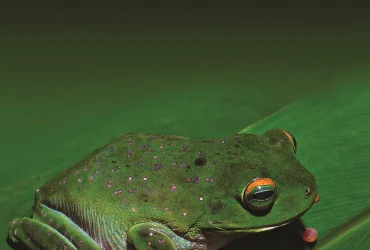 v5i2.106
v5i2.106ISSN: 1800-427X (print)
eISSN: 1800-427X (online)
DOI:10.47605/tapro.v5i2.106
Submitted date: 16 June 2013
Accepted date: 6 December 2013
Published date: 25 December 2013
Pp. 111–119, Pls. 1–2.
IMPACT OF VEHICULAR TRAFFIC ON HERPETOFAUNAL MORTALITY IN A SAVANNAH FOREST, EASTERN SRI LANKA
D.M.S. Suranjan Karunarathna, Sujan M. Henkanaththegedara, A. A. Thasun Amarasinghe* & Anslem de Silva
*Corresponding author. E-mail: thasun.taprobanica@gmail.com
Abstract
Mortality of wildlife due to vehicular traffic is among the direct impacts when natural habitats are dissected with roads. This study presents the herpetofaunal mortality on a 3km stretch of a highway crossing Nilgala Forest Area (NFA), a savanna dominated forest in Nilgala, eastern Sri Lanka. A total of 72 species of herpetofauna including 53 reptiles and 19 amphibians were recorded as road kills of which 19 species (26.3%) are endemic to Sri Lanka and 22 species (30.5%) are threatened nationally. A total of 552 road killed individuals (23.6% of tetrapod reptiles, 40.2% of serpentoid reptiles and 36.2% amphibians) were recorded over 48 days.
Key words : Road kills, reptiles, amphibians, threats, human impact, conservation
Section Editor: Ruchira Somaweera
eISSN: 1800-427X (online)
DOI:10.47605/tapro.v5i2.106
Submitted date: 16 June 2013
Accepted date: 6 December 2013
Published date: 25 December 2013
Pp. 111–119, Pls. 1–2.
IMPACT OF VEHICULAR TRAFFIC ON HERPETOFAUNAL MORTALITY IN A SAVANNAH FOREST, EASTERN SRI LANKA
D.M.S. Suranjan Karunarathna, Sujan M. Henkanaththegedara, A. A. Thasun Amarasinghe* & Anslem de Silva
*Corresponding author. E-mail: thasun.taprobanica@gmail.com
Abstract
Mortality of wildlife due to vehicular traffic is among the direct impacts when natural habitats are dissected with roads. This study presents the herpetofaunal mortality on a 3km stretch of a highway crossing Nilgala Forest Area (NFA), a savanna dominated forest in Nilgala, eastern Sri Lanka. A total of 72 species of herpetofauna including 53 reptiles and 19 amphibians were recorded as road kills of which 19 species (26.3%) are endemic to Sri Lanka and 22 species (30.5%) are threatened nationally. A total of 552 road killed individuals (23.6% of tetrapod reptiles, 40.2% of serpentoid reptiles and 36.2% amphibians) were recorded over 48 days.
Key words : Road kills, reptiles, amphibians, threats, human impact, conservation
Section Editor: Ruchira Somaweera
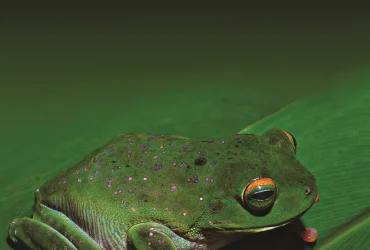 v5i2.105
v5i2.105ISSN: 1800-427X (print)
eISSN: 1800-427X (online)
DOI:10.47605/tapro.v5i2.105
Submitted date: 30 May 2013
Accepted date: 31 October 2013
Published date: 25 December 2013
Pp. 102–110.
ENVIRONMENTAL EFFECTS ON THE MORPHOLOGY OF THE SNOW TROUT Schizothorax richardsonii (GRAY, 1832)
Vandana Rajput, J.A. Johnson* & K. Sivakumar
*Corresponding author. E-mail: jaj@wii.gov.in
Abstract
This study examines the relationship between morphological traits related to body size and fin morphology and the environment in snow trout, Schizothorax richardsonii, a widespread species from the upper Ganga river basin, India. Three body shape traits (index of compression, index of trunk shape and relative body depth) and three fin traits (dorsal fin relative area, pectoral fin relative area and pectoral fin aspect ratio) were related to five environmental variables (water temperature, water flow, depth, conductivity and substrate diversity) across eight study streams. Water temperature, conductivity and substrate diversity were highly variable across the sampled sites. There was a significant negative correlation (r = -0.676) between composite morphological traits (principal components) related to body size and fin morphology. Furthermore, both body size and fin morphology were strongly correlated (r = 0.861 and r = -0.845 respectively) with composite environmental variables (water temperature, conductivity and substrate diversity) across sites. These findings suggest that the morphological traits of fish populations residing across environmental gradients are adapted to different habitats.
Key words : Schizothorax richardsonii, ecomorphology, environmental variables, Ganga River
Section Editor: Sandra Binning
eISSN: 1800-427X (online)
DOI:10.47605/tapro.v5i2.105
Submitted date: 30 May 2013
Accepted date: 31 October 2013
Published date: 25 December 2013
Pp. 102–110.
ENVIRONMENTAL EFFECTS ON THE MORPHOLOGY OF THE SNOW TROUT Schizothorax richardsonii (GRAY, 1832)
Vandana Rajput, J.A. Johnson* & K. Sivakumar
*Corresponding author. E-mail: jaj@wii.gov.in
Abstract
This study examines the relationship between morphological traits related to body size and fin morphology and the environment in snow trout, Schizothorax richardsonii, a widespread species from the upper Ganga river basin, India. Three body shape traits (index of compression, index of trunk shape and relative body depth) and three fin traits (dorsal fin relative area, pectoral fin relative area and pectoral fin aspect ratio) were related to five environmental variables (water temperature, water flow, depth, conductivity and substrate diversity) across eight study streams. Water temperature, conductivity and substrate diversity were highly variable across the sampled sites. There was a significant negative correlation (r = -0.676) between composite morphological traits (principal components) related to body size and fin morphology. Furthermore, both body size and fin morphology were strongly correlated (r = 0.861 and r = -0.845 respectively) with composite environmental variables (water temperature, conductivity and substrate diversity) across sites. These findings suggest that the morphological traits of fish populations residing across environmental gradients are adapted to different habitats.
Key words : Schizothorax richardsonii, ecomorphology, environmental variables, Ganga River
Section Editor: Sandra Binning
Hubungi Kami
The ultimate aim of the journal is to provide an effective medium for communication of the latest and best scientific information.
Copyright © 2020 Taprobanica. All Rights Reserved
Jasa Pembuatan Website by IKT




